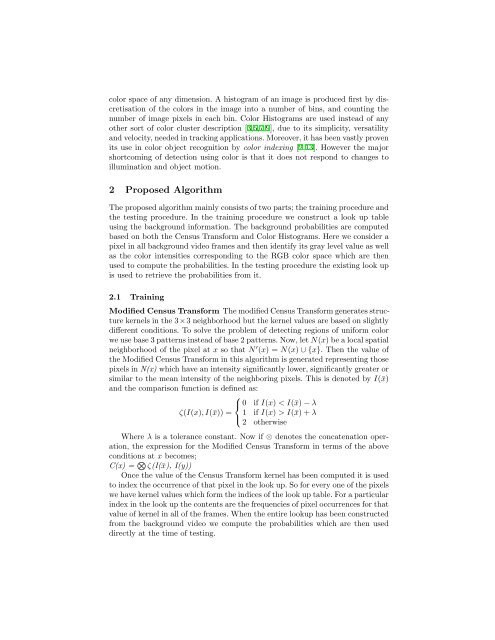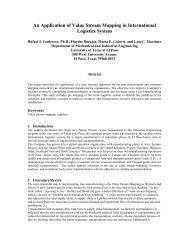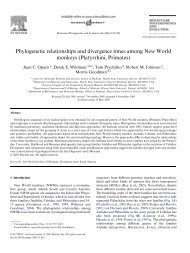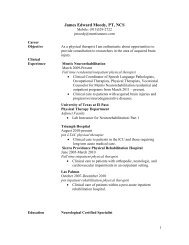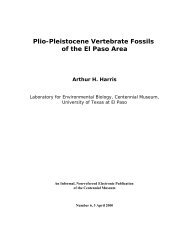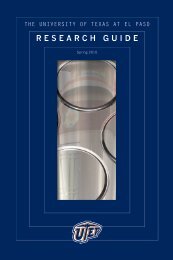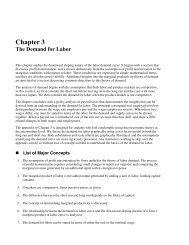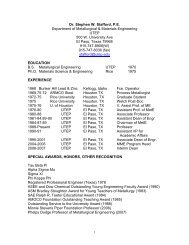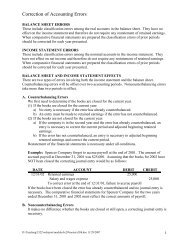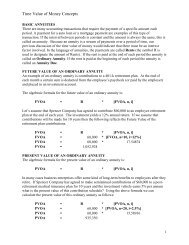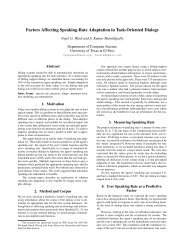Real-time Image-Based Motion Detection Using Color and Structure
Real-time Image-Based Motion Detection Using Color and Structure
Real-time Image-Based Motion Detection Using Color and Structure
Create successful ePaper yourself
Turn your PDF publications into a flip-book with our unique Google optimized e-Paper software.
color space of any dimension. A histogram of an image is produced first by discretisation<br />
of the colors in the image into a number of bins, <strong>and</strong> counting the<br />
number of image pixels in each bin. <strong>Color</strong> Histograms are used instead of any<br />
other sort of color cluster description [3,5,7,9], due to its simplicity, versatility<br />
<strong>and</strong> velocity, needed in tracking applications. Moreover, it has been vastly proven<br />
its use in color object recognition by color indexing [2,13]. However the major<br />
shortcoming of detection using color is that it does not respond to changes to<br />
illumination <strong>and</strong> object motion.<br />
2 Proposed Algorithm<br />
The proposed algorithm mainly consists of two parts; the training procedure <strong>and</strong><br />
the testing procedure. In the training procedure we construct a look up table<br />
using the background information. The background probabilities are computed<br />
based on both the Census Transform <strong>and</strong> <strong>Color</strong> Histograms. Here we consider a<br />
pixel in all background video frames <strong>and</strong> then identify its gray level value as well<br />
as the color intensities corresponding to the RGB color space which are then<br />
used to compute the probabilities. In the testing procedure the existing look up<br />
is used to retrieve the probabilities from it.<br />
2.1 Training<br />
Modified Census Transform The modified Census Transform generates structure<br />
kernels in the 3×3 neighborhood but the kernel values are based on slightly<br />
different conditions. To solve the problem of detecting regions of uniform color<br />
we use base 3 patterns instead of base 2 patterns. Now, let N(x) be a local spatial<br />
neighborhood of the pixel at x so that N ′ (x) = N(x) ∪ {x}. Then the value of<br />
the Modified Census Transform in this algorithm is generated representing those<br />
pixels in N(x) which have an intensity significantly lower, significantly greater or<br />
similar to the mean intensity of the neighboring pixels. This is denoted by I(¯x)<br />
<strong>and</strong> the comparison function is defined as:<br />
⎧<br />
⎨ 0 if I(x) < I(¯x) − λ<br />
ζ(I(x), I(¯x)) = 1 if I(x) > I(¯x) + λ<br />
⎩<br />
2 otherwise<br />
Where λ is a tolerance constant. Now if ⊗ denotes the concatenation operation,<br />
the expression for the Modified Census Transform in terms of the above<br />
conditions at x becomes;<br />
C(x) = ⊗ ζ(I(¯x), I(y))<br />
Once the value of the Census Transform kernel has been computed it is used<br />
to index the occurrence of that pixel in the look up. So for every one of the pixels<br />
we have kernel values which form the indices of the look up table. For a particular<br />
index in the look up the contents are the frequencies of pixel occurrences for that<br />
value of kernel in all of the frames. When the entire lookup has been constructed<br />
from the background video we compute the probabilities which are then used<br />
directly at the <strong>time</strong> of testing.


